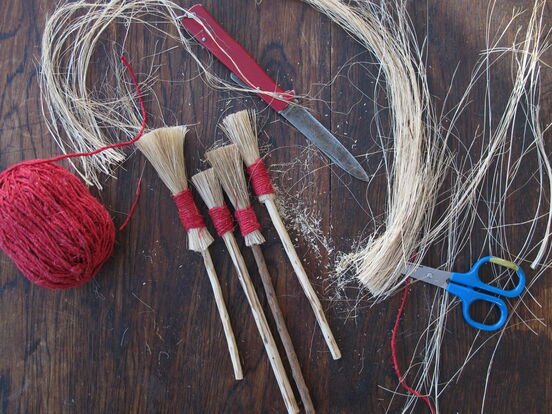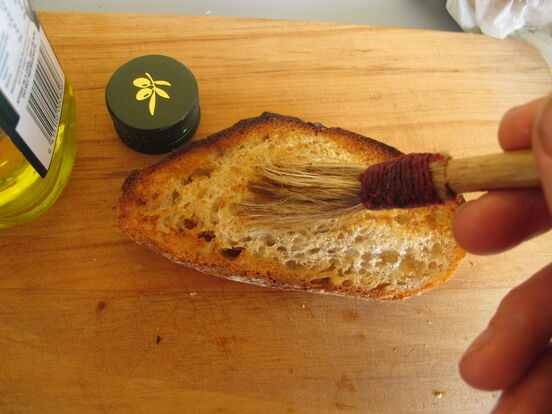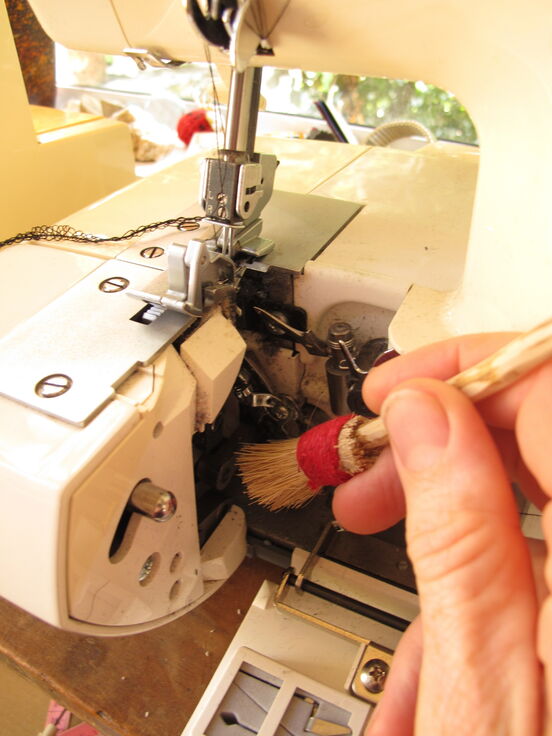-
Author
Finn McCahon-Jones -
Date
30 Apr 2020
Essay
How to: A Maker's Guide - Make a Simple Brush
I have been making these brushes for various tasks around the house. I have made strong stubby ones to clean the coffee machine, longer ones to apply oil when cooking. And one has recently been used to clean the inside of an overlocker! Potter friends have suggested they would make a good hakeme brush for glaze application. This is a simple process using tools and materials from around your home.
You could use:
-Dead cabbage tree leaves (2-4)
-A bucket of water
-Secateurs
-A stick* (to make the brush handle)
-Ball of strong twine
-Scissors
-Pocket knife
-Blunt knife or a shell (for stripping fibre)
-A comb/ metal ikebana ‘frog’ (for separating the fibre)
*I used kanuka, you could use other hard woods from your garden like camelia or olive wood; or whittle down some demolition timber.
Preparing the materials:
When selecting the cabbage tree leaves, any that have fallen from the tree are fine. Just choose ones that feel robust and are free from insect bites.
Submerge your selected bundle of cabbage tree leaves in a bucket of water for at least two weeks, or until the leaves have become supple. You can leave them soaking up to a month.
Select a stick that you think would make a good brush handle (long straight), clip it to size with your secateurs and leave to dry.
Method (watch Finn's demonstration here):
Once you have your materials, making a brush should take about 20 minutes.
1. Stripping fibre
Take a soaked cabbage tree leaf and lay flat on a board or table, using the blunt knife gently scrape the outer fibre from the inner fibre. As you scrape, some fibre will break and come away, this is fine. Flip the leaf and scrape the other side. Strip a couple of leaves so you have enough fibre for the brush bristles.
Once you have stripped the fibre, give them a quick wash to remove any residue from the stripping process. Take these fibre and comb them out.
After combing, leave the fibre to dry flat, or hang them up so they retain their long straight shape.
2. Making the handle:
Take your stick and carefully remove the bark with a sharp knife, making sure you are cutting away from your body. Removing the bark is not completely necessary but will make your brush last longer by removing the soft material which can flake off and rot easily.
3. Assembling brush
Take your long cabbage tree fibre and cut them to about 8 - 9cm lengths (or to your desired length, making sure you have 1cm extra for final trimming). Carefully arrange all the fibre into a neat pile.
Cut a 40cm length of twine.
Carefully push the handle into the centre of the fibre and hold tight. Take the twine and make a loop at one end, keeping the two ends of the twine in your hand gripped against the fibre.
4. Whipping the fibres
Starting at the tail end of the twine, wind the twine around and around the fibre securing them to the handle. Keep a tight pull on the twine as you are doing this. Once you have wound the twine to the top, put the end of the twine into the loop and pull the loop into the binding, securing the ends. This binding method is called whipping (there are detailed instructions online).
Trim twine and cabbage tree fibre.
Congratulations, you have made a brush.
--
Finn McCahon-Jones is a curator/ researcher with a professional background in museums. He was previously the director of Te Toi Uku Crown Lynn & Clayworks Museum, and a curator at Auckland Museum specialising in the decorative arts. He currently freelances in the arts sector.

How to Make a Simple Brush. Image: Finn McCahon-Jones

This brush can be used for applying oil to bread or pastry. Image: Finn McCahon-Jones

Clean an overlocker or coffee machine with this homemade brush. Image: Finn McCahon-Jones